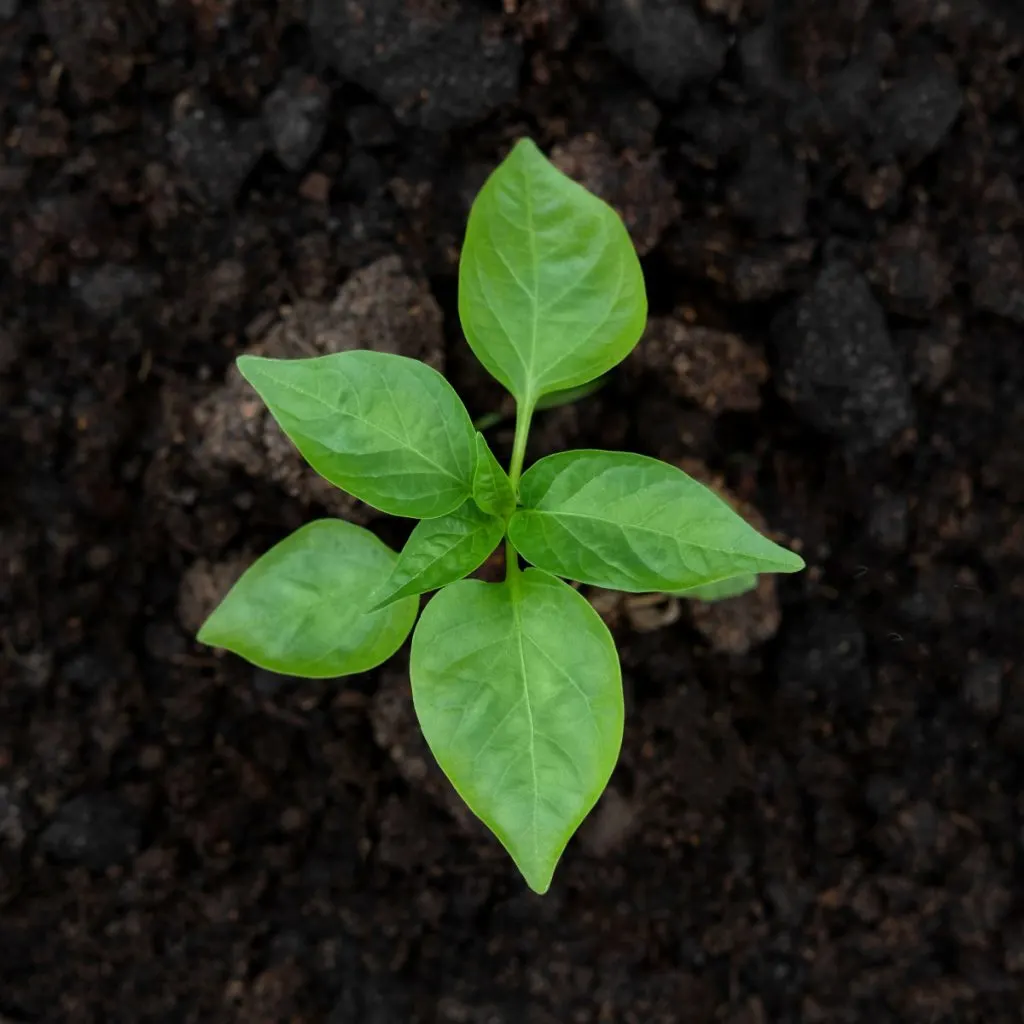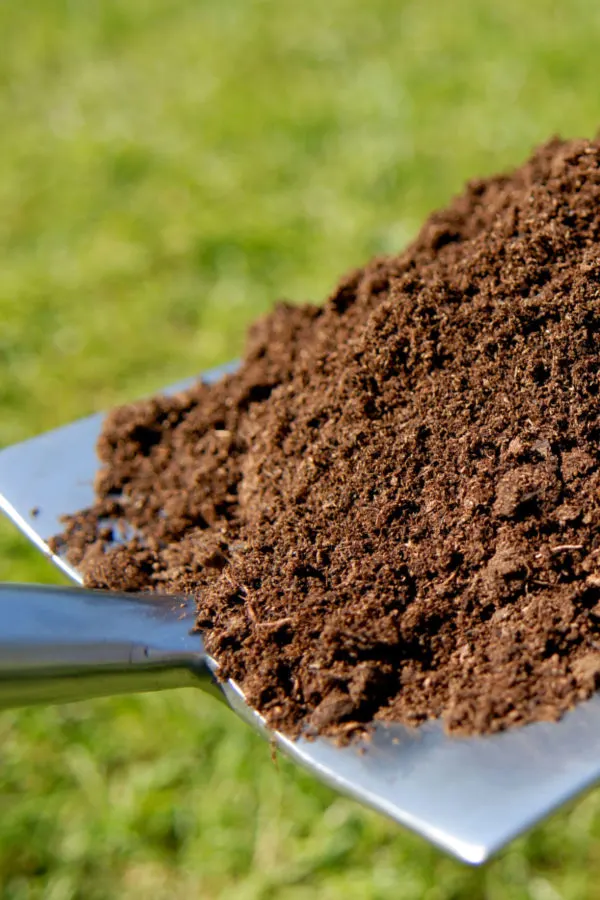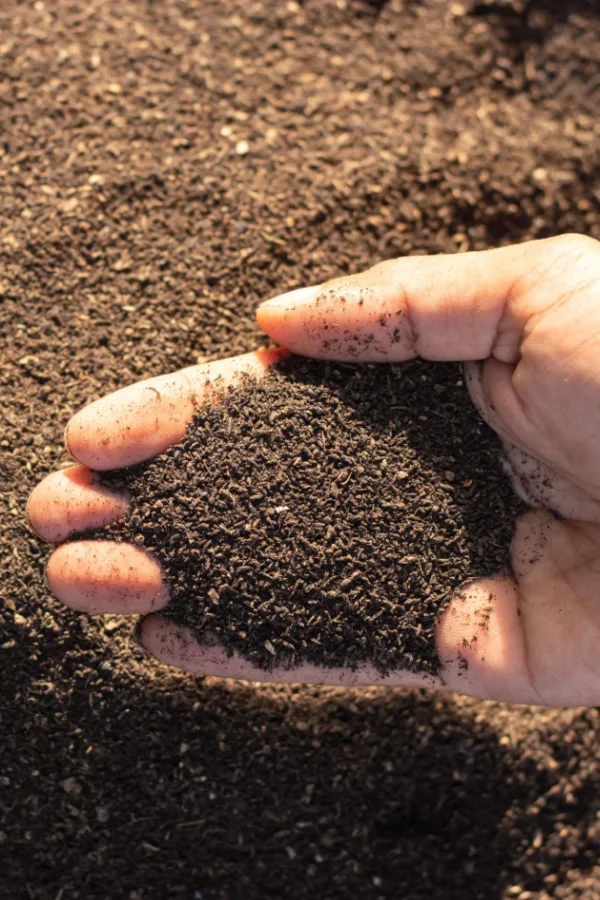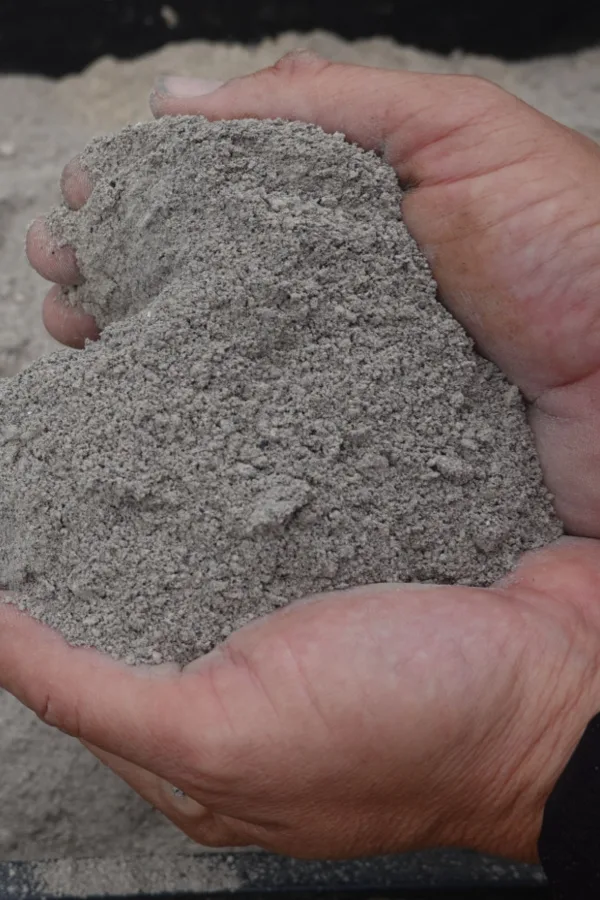One of the easiest and best ways to get your pepper plants off to a great start this year is to fill their planting hole with a few simple but powerful ingredients that will not only boost early growth – but set the stage for your plants to produce an amazing harvest this summer!
Pepper plants are notorious for being slow starters early in the season. No matter what type of pepper your love to grow (hot, sweet or mild) – or what type of garden you have (traditional, raised beds or containers) – pepper plants can seem to take forever to start growing and producing.
While it’s true that pepper plants are a bit slower to mature and produce blooms and fruit than tomatoes, cucumbers and other common garden crops – quite often, the problem with their slow growth comes down to the plants not having the nutrients they need most for early growth. Especially in the area right where they are planted!

When a pepper transplant first goes into the soil, it can suffer from a bit of shock. Especially if it doesn’t have the energy and power to establish its roots in the surrounding soil. But that is exactly the point it needs easy to absorb nutrients the most!
Giving Pepper Plants The Power They Need On Planting Day
The simple truth is, the faster and bigger a pepper plant’s roots can grow early on, the more easily it will absorb nutrients and moisture from the soil. And the faster it can do that – the quicker it will develop, mature and begin producing blooms and fruit.
That is exactly why it is so vital to give your new transplants extra energy in their planting hole. With just a few basic, all-natural ingredients, you can fill the soil around their roots with loose, fertile, and easy to absorb energy to get them growing fast. And as you will see below, it’s easy to do with just compost, worm castings, and a little bit of wood ashes!
3 Must Add Ingredients To Put In Your Pepper Planting Hole!
#1 Compost
Compost is certainly an amazing ingredient to use on nearly all vegetable plants. But the case can be made that for young pepper plants, it can be absolutely necessary for getting them off to a fast start. Not only for the energy it provides, but for what it does for the soil around a pepper plant’s roots.

Compost is teeming with all kinds of the pure nutrients pepper plants love. And, because they are so pure, the roots of a pepper plant can quickly and easily absorb them. But compost is also lightweight and filled with humus. And that means the roots of pepper plants can easily expand into the surrounding soil – and fast!
Obviously, the quicker a plants roots expand, the more energy it can absorb. But if all of that wasn’t enough, compost also absorbs moisture with ease. And a lot of it! In fact, compost can hold nearly 10 times it’s weight in water. That means your pepper plants have the moisture they need right from the start!
When planting peppers, be generous with the compost! Mix two to three cups into each planting hole as you fill in the hole. There is no worry of burning a plant’s roots with compost. Affiliate Product Link: Charlie’s Compost 10lb
Once you finish planting, scatter another cup or two on the surface of the soil. This layer will leach even more nutrients down into the soil over time. As plants grow, continue to add a few more cups of compost on top each month to help give the plant a low and slow feeding all summer long.

#2 Worm Castings – 3 Must Add Ingredients To Put In Your Pepper Planting Hole!
Worm castings, which are nothing more than the dried and aged manure of earthworms, are one of the most gentle yet powerful nutrients you can supply for your pepper transplants on planting day.
The nutrient makeup of worm castings is simply ideal for peppers. Not only do they have the balance of essential nutrients pepper plants love, like compost, they can absorb easily into their roots. Even better, the energy they release is delivered slow and steady.
But it’s not just the energy worm castings provide to pepper plants that makes them special. Worm castings also absorb water with ease. And that moisture helps to hydrate roots perfectly as they establish in new soil. Even more, their loose, lightweight makeup makes it easier for roots to expand and grow quickly.
When planting, don’t be stingy with castings – they really can make a huge difference for plants! For best results, mix 3/4 to 1 full cup of castings into each planting hole soil as you plant. Affiliate Link: Pure Organic Worm Castings Fertilizer

If you really want to boost your plants – sprinkle another 1/2 cup around the surface after planting. This top coating of castings and compost will act as a slow release fertilizer every time it rains or you water. It’s just one more way to power early growth for your plants.
Wood Ashes – 3 Must Add Ingredients To Put In Your Pepper Planting Hole!
Last but not least, plain old wood ashes from your fireplace or fire pit are great for adding to the planting hole of pepper plants. Wood ashes contain carbon, calcium, potassium, magnesium and phosphorous – which all happen to be vital nutrients for pepper growth and production.
And all of those nutrients do more than just power growth, they can also help protect plants. One of the best examples of this is with the calcium wood ashes release into the surrounding soil.
Much like tomato plants, pepper plants can suffer from blossom end rot if the soil is lacking in calcium. But by adding a cup of ashed into every single pepper planting hole, you can help boost the available calcium plants need. Wood ashes also help to lighten the soil and hold water in, again helping peppers get the moisture they need.

One note of caution with ashes – be careful not to overdo it. A single cup is perfect for each transplant. If you put too much in, you can upset the pH of the soil and actually harm a pepper plant’s growth. See: How To Use Wood Ashes In The Garden – And Why They Work!
In addition, always make sure you are using ashes from pure wood fires – and not fires where other materials may been burned with them. Plastic and other foreign object can release harmful chemicals into the soil if present.
A Few Extra Boosters For Pepper Plants – 3 Must Add Ingredients To Put In Your Pepper Planting Hole!
There are a couple of other free and simple ingredients you can add to your pepper planting hole that can also help power young plants. The good news is that like ashes, both are completely free.
The first is spent coffee grounds. Old coffee grounds are a great source of nitrogen and other trace minerals for pepper plants. Like castings and compost, they also lighten the soil and add valuable humus. When planting peppers, mix in a few tablespoons of spent grounds for each plant.
Another great all-natural ingredient is pulverized egg shells. Egg shells contain a large amount of calcium that can help prevent blossom end rot. But to get their full effect, the secret is to first grind the egg shells into a powder before putting in the hole.
Crushed egg shells will eventually break down, but they can take years to do so. By grinding them down to a fine powder (an electric coffee grinder works great for this), you can release the egg shell’s nutrients much faster into the soil and plants.
Here is to planting your peppers this year for success – and to your biggest and best harvest ever!
This Is My Garden
Follow Our Facebook Page For Great Gardening Tips And Advice! This Is My Garden Facebook Page
This Is My Garden is a garden website created by gardeners, for gardeners. Jim and Mary Competti have been writing gardening, DIY and recipe articles and books and speaking for over 15 years from their 46 acre Ohio farm. They publish three articles every week, 52 weeks a year. Sign up today to follow via email, or follow along!
